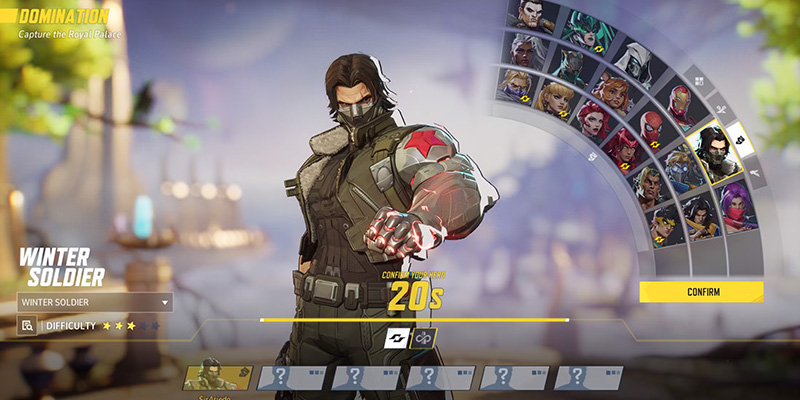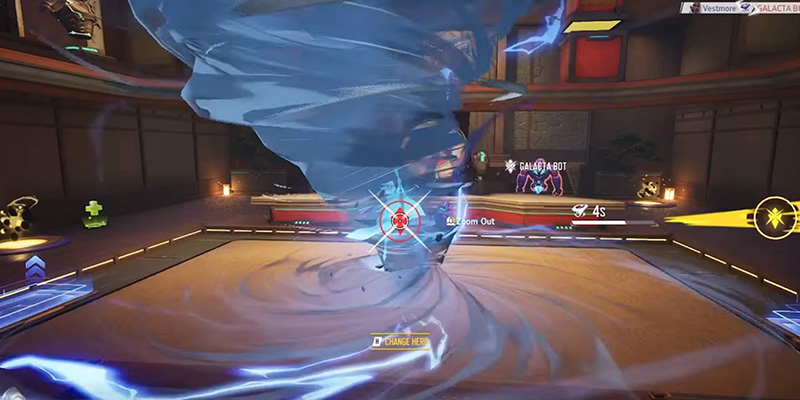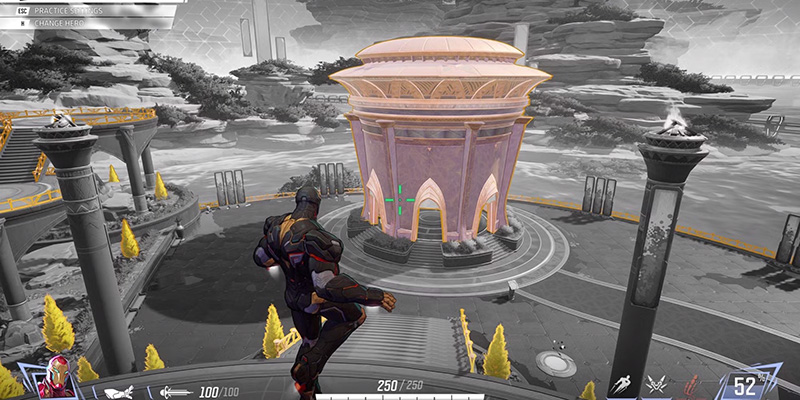Welcome to the electrifying world of Marvel Rivals! Diving into this fast-paced, 6v6 Super Hero team-based PVP shooter is an absolute blast. But let's be real, with so many unique heroes, complex abilities, and dynamic maps, the initial learning curve can feel like going toe-to-toe with the Hulk. It's a complex game with a lot of mechanics to absorb. Fear not, true believer! This straight-shooting guide is here to help new players sidestep those common early frustrations and supercharge their improvement.
Making mistakes is all part of the journey to becoming a Marvel Rivals legend. The key is recognizing those blunders and learning how to fix them. Consider this report a friendly co-pilot, ready to navigate through the initial turbulence and get players soaring. The aim is to equip aspiring heroes (and villains!) with the knowledge to not just play, but to dominate.

The Top 10 Rookie Blunders
Learning the ropes in any new competitive game involves a few bumps and bruises. In Marvel Rivals, certain common missteps can repeatedly hinder progress. By understanding these pitfalls and how to correct them, players can significantly accelerate their skill development.
Going Lone Wolf – The "Leeroy Jenkins" Syndrome
Why It's a Blunder: Marvel Rivals is fundamentally a team-based 6v6 game. Coordinated team play almost always triumphs over scattered individual efforts. When players repeatedly charge in solo, especially after teammates have fallen, they engage in "staggering." This feeds the enemy team ultimate charge and vital map control, making it increasingly difficult for the player's own team to mount a proper attack or defense. Furthermore, game modes like Convoy, Domination, and Convergence are won by completing objectives, not solely by achieving a high kill-death ratio.
Play the Objective: The payload, control point, or mission area should always be a primary focus. A player's presence on the objective is often more valuable than chasing a distant kill.
Team Awareness: Cultivating an awareness of teammates' positions is essential. Players should aim to push with their team and retreat with them, maintaining cohesion.
Relatable Example: Imagine a Domination match on the Royal Palace map. The control point is actively being captured by the enemy. Two allied heroes have just been eliminated. Instead of waiting for them to return to the fight, a player controlling Iron Man decides to fly solo onto the point against three opponents. While they might secure an impressive kill, they are quickly overwhelmed. This leaves their team further behind, and the enemy successfully captures the point. Had the Iron Man player waited just a few more seconds, the engagement could have been a more favorable 3v3 on the objective.
Stick to the squad like webbing to Spider-Man! A coordinated push with superior numbers is almost always more effective than a solo hero moment.
Ultimate Indecision – Hoarding or Wasting Game-Changers
Why It's a Blunder: Ultimate abilities are powerful, often game-changing tools. Hoarding them means missing out on opportunities to win crucial team fights. Each second an ultimate is held after it could have been effectively used is also lost potential charge towards the next ultimate. Conversely, wasting an ultimate—for instance, by using a high-damage ability on a single, already doomed enemy, or deploying it after a round ends in Domination when it would carry over to the next round—provides no significant advantage and can put the team at a severe disadvantage when the enemy uses their ultimates more effectively.

Assess the Situation: Before activating an ultimate, players should consider: Is this a critical fight for an objective? Can this ultimate secure one or two key eliminations that will swing the fight in their team's favor? Is the enemy team grouped up advantageously?
Coordinate (If Possible): Informing teammates about ultimate readiness can lead to powerful combination plays, which ties into understanding Team-Up abilities.
Role Ignorance – Picking a Random Hero & Hoping for the Best
Why It's a Blunder: Team composition is critically important. A team overloaded with Duelists may lack the survivability to hold objectives, while a team deficient in damage output will struggle to secure eliminations. Each role fulfills specific functions: Vanguards (e.g., Hulk, Captain America) are designed to absorb damage and create space for their team; Duelists (e.g., Iron Man, Black Panther, Scarlet Witch) specialize in dealing high amounts of damage; and Strategists (e.g., Luna Snow, Mantis) provide healing, buffs, or other crucial utility. An unbalanced team will find it difficult to execute strategies effectively in objective-based game modes like Convoy or Domination.
| Role | Brief Description | Example Heroes |
|---|---|---|
| Vanguard | Takes the lead, absorbs damage, and creates space for teammates | Hulk, Groot, Captain America, Doctor Strange |
| Duelist | Deals high amounts of damage quickly to eliminate key targets | Black Panther, Iron Man, Scarlet Witch, Punisher |
| Strategist | Provides healing, buffs, crowd control, or other team utility | Luna Snow, Mantis, Loki, Rocket Raccoon |
Team-Up Blindness – Missing Out on Powerful Synergies
Why It's a Blunder: Team-Up abilities offer unique advantages such as extra healing, damage boosts, or entirely new ability effects. For example, pairing Luna Snow with Hawkeye can grant Hawkeye a terrain-penetrating arrow, while an Iron Man and Ultron combination can unlock a piercing unibeam that damages enemies and heals allies. While it's noted that these team-ups aren't always so game-changing that one should pick an unfamiliar hero just for the synergy, consciously enabling them when possible provides a free and tangible advantage.
Map Illiteracy – Not Using The Environment (or Chrono Vision!)
Why It's a Blunder:
- Positioning is Key: High ground offers a significant tactical advantage for many heroes, particularly Duelists like Hawkeye or Black Widow, by providing better sightlines and cover. Ignoring these advantageous positions can make a player an easier target.
- Health Packs Save Lives: Knowing the locations of health packs can be a lifesaver, especially when allied Strategists are incapacitated or preoccupied.
- Destructible Environments are Game-Changing: Marvel Rivals features highly destructible maps, a key feature of its gameplay. The Chrono Vision mechanic (activated by pressing 'B' on the keyboard or D-Pad Right on a controller) highlights these destructible objects. Destroying enemy cover, opening new sightlines, or eliminating an enemy sniper's perch can drastically alter the course of a fight.

Use Chrono Vision Regularly: It should become a habit to activate Chrono Vision frequently to identify destructible terrain that could be used to gain an advantage or deny one to the enemy team.
Think Vertically: Many heroes in Marvel Rivals possess abilities that grant vertical mobility. This mobility should be used to take unexpected angles, secure high ground, or escape dangerous situations.
Targeting Tantrums – Shooting Tanks While Squishies Wreak Havoc
Why It's a Blunder: Vanguards are designed to absorb substantial amounts of damage and draw enemy fire. Focusing them while their damage dealers or healers are left unchecked means playing directly into the enemy team's strategy. Eliminating a key Strategist (especially a healer) or a high-damage Duelist first can cripple the enemy team's ability to sustain a fight or deal effective damage. This makes the Vanguard much easier to deal with afterward.
- Eliminate healers first
- Focus high-damage threats
- Use flanking routes
- Coordinate with team
- Always shoot the tank
- Ignore enemy healers
- Fight from predictable angles
- No team coordination
Cut off the snake's head (Strategists/Duelists), and the body (Vanguard) will fall. Smart target prioritization wins fights!
Gadget & Buff Amnesia – Letting Enemy Deployables Dictate the Fight
| Deployable/Effect | What it Does | Quick Tip to Counter/Address |
|---|---|---|
| Loki's Healing Rune | Heals enemies inside; converts damage dealt to them into more healing | "Shoot the rune first!" |
| Rocket's Armor Pack (Friendly) | Provides +25 temporary health/armor to an ally who picks it up | "Pick it up for bonus health!" |
| Mantis' Sleep Dart (on Teammate) | Incapacitates a teammate for a duration | "Shoot the small Mantis icon on their back to wake them!" |
| Squirrel Girl's Stampede | Summons a swarm of squirrels that deal damage | "Prioritize shooting the squirrels – they're fast but have low health!" |
The "One-Hero Army" Fallacy
Why It's a Blunder:
- One-Tricking is Risky: If a player's sole hero is picked by someone else, banned (which could be a feature in future ranked modes or custom games), or heavily countered by the enemy team composition, that player becomes a significant liability to their team.
- Master of None: Spreading playtime too thinly across an extensive roster of heroes prevents a player from truly learning the nuances, matchups, advanced techniques, and skill ceilings of any particular character.
- A lack of flexibility means a player cannot effectively adapt to their team's needs or make strategic counter-picks when the situation demands it.

Cooldown Chaos & Reload Nightmares
Why It's a Blunder:
- Cooldown Management is Vital: Abilities are a hero's primary tools. Wasting them by using them without purpose means they won't be available when they are truly needed to secure a kill, save a teammate, or achieve an objective.
- Reload Discipline: Reloading at the wrong time can easily lead to a player's elimination or cause a teammate to fall. Conversely, not reloading during lulls in combat means entering the next crucial fight with only a partial clip or magazine.
Reload Proactively: It's best to reload during any downtime in combat, such as when repositioning, taking cover, or moving between objectives.
Ability Chaining: Learning to chain abilities effectively with primary fire can maximize damage output or utility, creating powerful offensive or defensive sequences.
Kill Chasing Over Winning – The Empty Stats Victory
Why It's a Blunder: Objectives are the primary win conditions in Marvel Rivals, not just individual kill tallies. A player can have the top number of eliminations in the match and still lose if the enemy team plays the objective more effectively. Chasing kills frequently leads to overextending into dangerous enemy territory, resulting in being picked off, which then staggers the team's respawns and weakens their overall presence.
Play for the 'W' (win), not just the K/D. A victory with fewer personal kills often feels far better than a loss accompanied by a flashy scoreboard.
Your Journey to Rivalry Rockstar
Avoiding these ten common blunders will significantly boost any player's game in Marvel Rivals. It's important to remember that improvement is a journey, not an instant destination. Every match, win or lose, offers valuable lessons. Patience, consistent practice, and a genuine willingness to learn from each experience are key components of growth.
The power of awareness—be it game awareness, map awareness, team awareness, or even self-awareness regarding tilt or hero proficiency—cannot be overstated. This, combined with adaptability—the willingness to switch heroes when needed or alter tactics based on the flow of the match—forms the bedrock of a strong player.

Now armed with the knowledge to dodge those initial rookie mistakes, players are better equipped to make their mark. The Marvel Multiverse is a dynamic and ever-evolving battlefield, with new patches, balance changes, and potentially new heroes and maps on the horizon. Continuous learning and adaptation are part of the enduring fun. So, get out there, be a hero (or a villain!), and show everyone what you're truly made of!
